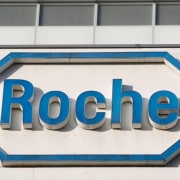Roche to accelerate development of obesity assets from $2.7B Carmot buy
Roche to accelerate development of obesity assets from $2.7B Carmot buy
Roche in its second-quarter 2024 business report on Thursday unveiled plans to ramp up the development of its obesity candidates, which the pharma claims can differentiate them from an increasingly competitive weight-loss drug market.
Roche Group CEO Thomas Schinecker in response to an analyst question said that the pharma is planning to put “certain molecules” for obesity on “fast-track.” This would enable the company take its weight-loss treatments “much faster to the market than what’s currently being assumed.”
Company executives did not provide a specific timeline for the development of its obesity assets.
Roche went all-in on obesity in December 2023 when it dropped $2.7 billion to acquire California biotech Carmot Therapeutics and its obesity candidates, including CT-388 and CT-996. The deal, which was formally closed in January 2024, signals the pharma’s return to the weight-loss drug market after it terminated the development of its Phase III GLP-1 analog taspoglutide in 2011, citing safety concerns.
Designed to be administered via a subcutaneous injection, CT-388 is a dual agonist of the GLP-1 and GIP receptors. This mechanistic profile allows the drug candidate to potentially help lower patients’ blood sugar levels and suppress their appetites. In May 2024, Roche released Phase Ib data for CT-388, touting an 18.8% drop in body weight at 24 weeks versus placebo.
Roche’s other promising asset from the Carmot buyout is CT-996, which is an oral once-daily GLP-1 receptor antagonist that, like CT-388, also helps lower blood sugar levels by promoting the secretion of insulin from the pancreas. The pharma released Phase I results for CT-996 in July 2024, highlighting a statistically significant 6.1% weight loss relative to placebo.
Unlike currently available obesity medications, CT-388 and CT-996 were designed to be biased toward a specific pathway, allowing them to exhibit stronger effects while also avoiding desensitization leading to a longer duration of activity.
“We do believe that we have potential best-in-disease molecules,” Schinecker said. “There is a certain differentiation that we have.”
However, company executives appeared to be particularly optimistic about the oral pill CT-996, which Shinecker branded as a “very good molecule.” Because the drug candidate is a small molecule, Roche can leverage its existing manufacturing network to easily scale up production of CT-996. The pharma also noted that it is ramping up investments in peptide manufacturing.
Aside from its Carmot buy, Roche seems to still be open to potential deals in the obesity space, though the pharma will be picky with the companies it signs contracts with.
“We probably look at thousands of companies and we have to be very diligent in the kind of deals that we do,” Shinecker explained, noting that the company is “constantly” looking at potential agreements making sure that they are both scientifically and financially sound. “I can assure you that we will be extremely disciplined in those deals,” he said.
Source: BioSpace









 Reuters
Reuters
